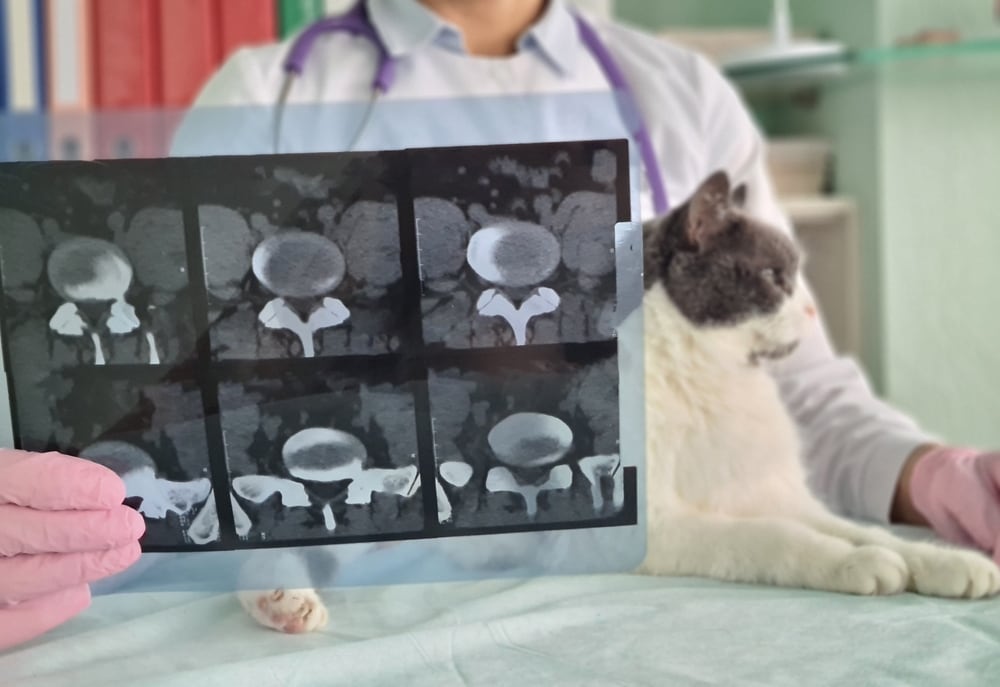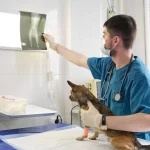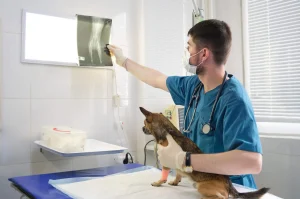
When you’re striving to capture diagnostic-quality images, few things are more frustrating than reviewing a blurry X-ray. Whether caused by movement, patient anxiety, or environmental distractions, blurring can compromise your ability to make timely and accurate decisions.
At AxisVet, we know how important it is to get things right the first time. That’s why we’re sharing simple, compassionate strategies to reduce motion blur – so your team can work more efficiently and your patients can feel safe and cared for during every procedure.
How Can Restraint Improve Your X-Ray Quality?
One of the leading contributors to poor X-ray image quality is patient motion. Even a tiny shift can disrupt the X-ray beam and leave critical anatomical structures blurred or distorted. Effective restraint can make all the difference.
When appropriate, chemical restraint such as sedation or anesthesia can help keep patients relaxed and motionless during medical imaging. This is particularly beneficial for painful, anxious, or high-energy animals where voluntary stillness is unlikely.
Pairing chemical restraint with physical methods – like sandbags, tape, or foam supports – can further stabilize your patient. These tools help even sedated pets maintain the precise positioning needed for consistent, high-quality X-ray results. Working with an experienced X-ray technician who understands spatial resolution and patient behavior can be an invaluable asset as well.
It’s important to assess each case individually. What works for a calm adult cat may not suit a nervous puppy. With thoughtful planning, you can reduce blurring while keeping safety top of mind.
Why Does Patient Comfort Lead to Clearer Images?
Restraint alone isn’t enough if the animal is tense or uncomfortable. Creating a patient-friendly experience can reduce movement, making your job easier.
Pain management should be the first consideration. A pet in discomfort is unlikely to stay still – gentle sedation or pre-medication with analgesics may be the key to a successful session. Once the patient is calm, positioning becomes more effective.
Comfortable surfaces are also important. Consider using padded troughs or warming blankets, especially for older animals or those recovering from surgery. When pets feel secure and at ease, they’re less likely to resist or squirm during the procedure.
Try to put yourself in the patient’s paws – what small adjustments could help them feel safer? These efforts help build trust and encourage cooperation.
How Does a Calm Environment Help?
Your surroundings play a major role in patient behavior. Loud noises, slamming doors, and foot traffic can startle animals and disrupt the X-ray imaging process.
Creating a calm and controlled X-ray room helps promote stillness. Post a sign to alert staff when X-rays are in progress to minimize unnecessary entries during that time and prevent disruptions. This reduces patient distractions and sets a quiet tone.
Sound management is also key. Try playing gentle background music or using a white noise machine to mask the sounds of the machine and clinic equipment. These small tweaks can ease both the pet’s and the technician’s nerves.
By maintaining a peaceful setting, your team can focus and your patients are more likely to stay still – helping you avoid retakes and save time.
Better Images Begin with Better Handling
Capturing clean, readable images starts well before you press the exposure button. With the right blend of restraint, comfort, and environmental adjustments, you can dramatically reduce the chance of a blurry X-ray – improving your accuracy, confidence, and efficiency.
Your practice deserves X-ray images you can trust – so your patients can get the treatment they need, without delays or repeated radiation exposure. Try these tips, and experience the difference clear imaging can make.
At AxisVet, we’re passionate about helping veterinary teams thrive. No matter if you need advice on positioning techniques for a chest X-ray or want to upgrade your workflow, our services are built around real clinical challenges like these.




